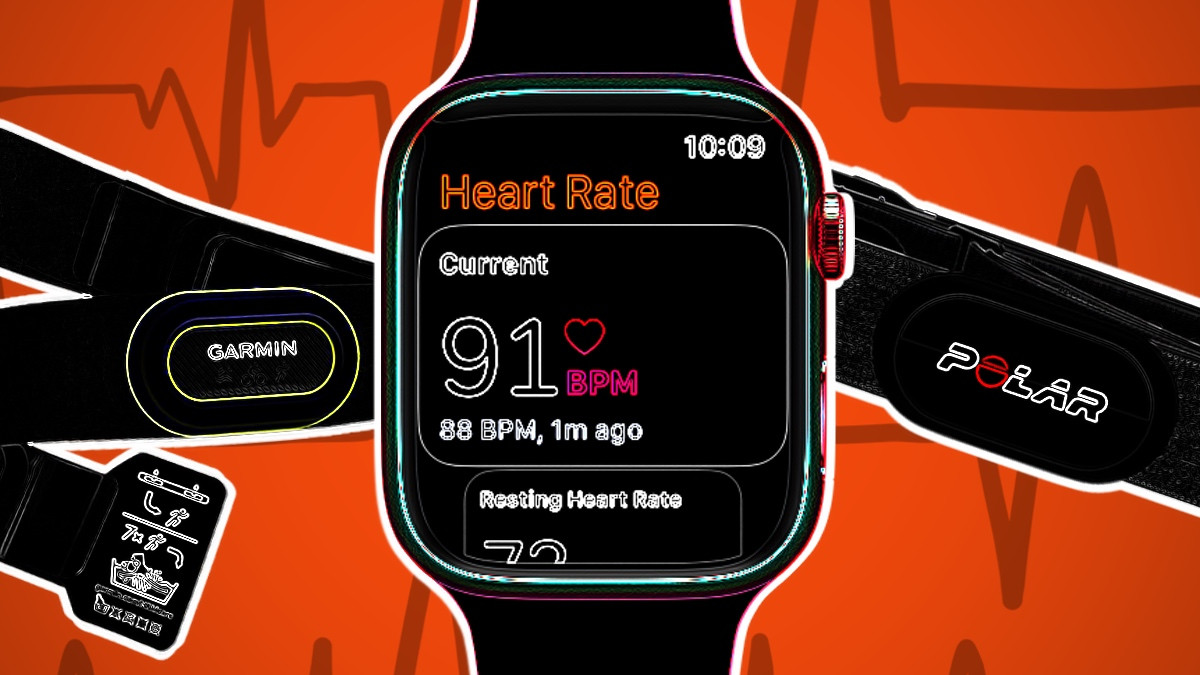
Unlike options from the past, the best heart rate monitors in 2023 are able to provide super-accurate tracking during workouts and medical-grade health insights.
Commonly, this heart rate tracking is built into a smartwatch, fitness tracker, or sports watch, but there are also still chest straps and armbands that can offer very accurate HR readings.
And while there has never been more top wearable heart monitoring devices to pick between, this does also give you a bit of a difficult choice to make.
That's where this guide to the top heart rate monitors can help.
Below, we've summarised the top options we've tested as part of our reviews, as well as included some guidance on the type of heart monitors you should be looking for.
- Everything you need to know about optical heart rate accuracy
- What is heart rate variability? We explain the feature
- Best smartwatches that can take an ECG
How we test heart rate monitors
As we've already alluded to, a heart rate monitor is only worthwhile if it's capable of capturing accurate data.
Through our extensive testing, we've been able to weed out the lesser devices and highlight only the cream of the crop in this buyer's guide.
It can take plenty of time to ascertain whether a chest strap, watch or armband is accurate, however.
That's why we perform long-term tests for features powered by heart monitoring - analyzing our trends and spotting any anomalies - and also test against multiple devices if we're gauging real-time heart rate metrics.
This process is ongoing, as we update this guide frequently to make sure our picks accurately reflect the current market.
- Read more about how we test and review at Wareable
Apple Watch Series 8
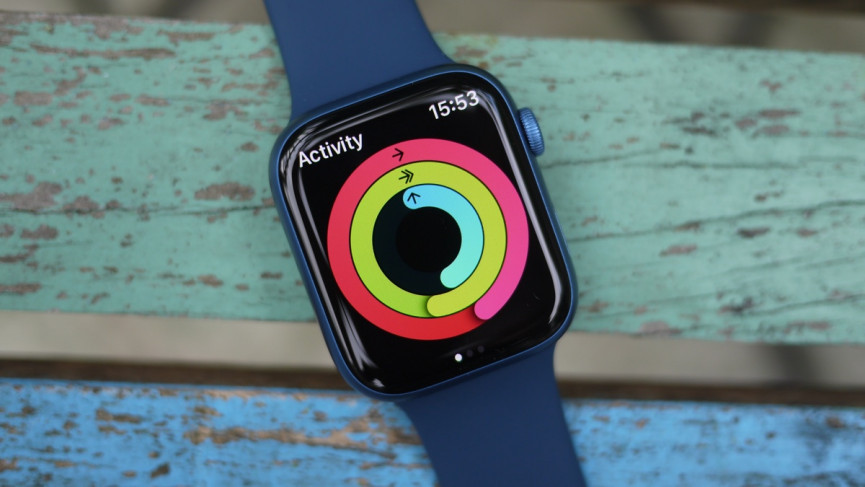
squirrel_12863330
Key considerations
- Body position: Wrist
- Sensors: Optical, electrical heart rate sensor, temperature sensor
- External HR monitor pairing: Yes
- Heart monitoring features: Heart rate zones, irregular heart rhythm notifications, high/low heart rate notification, resting heart rate, heart rate variability, walking average heart rate, ECG readings, Cycle tracking
Best smartwatch for heart monitoring
Whether it's used for exercise tracking or health monitoring, the Apple Watch Series 8 is by far the most complete heart monitor available.
When working out, we've put it through the same rigorous testing as we do with all of the wearables on this list. And the Series 8, like its predecessors, consistently proves to be the most accurate optical heart rate sensor on test - even when matched against dedicated sports watches, and even during the likes of interval training.
With the addition of heart rate zones in watchOS 9, it's also improved even further.
Data is viewable inside Apple's Workout app, but the benefit of having a strong collection of third-party apps means you can also view that data in places like Strava and Runkeeper.
Wearing the Series 8 also helps flood Apple Health with data, and we're not just talking 24/7 heart rate readings - heart rate variability, VO2 Max, resting heart rate and walking average can all be viewed as trends across the last day, week, month, or year. That data can be viewed inside Health and can also be exported to a PDF to be shared with medical professionals.
There's even more, as well. The device's ECG App harnesses the electrical heart rate sensor in the Digital Crown to take electrocardiograms and check for heart issues like atrial fibrillation, while the temperature sensor works in conjunction with the optical heart sensor to provide cycle tracking for women.
It's an outstanding all-rounder that's as good for those conscious of their heart health as it is for those serious about tracking exercise. And the same great performance is available in the Apple Watch SE (2022) and Apple Watch Ultra.
- Read our full Apple Watch Series 8 review
Garmin Forerunner 265
Wareable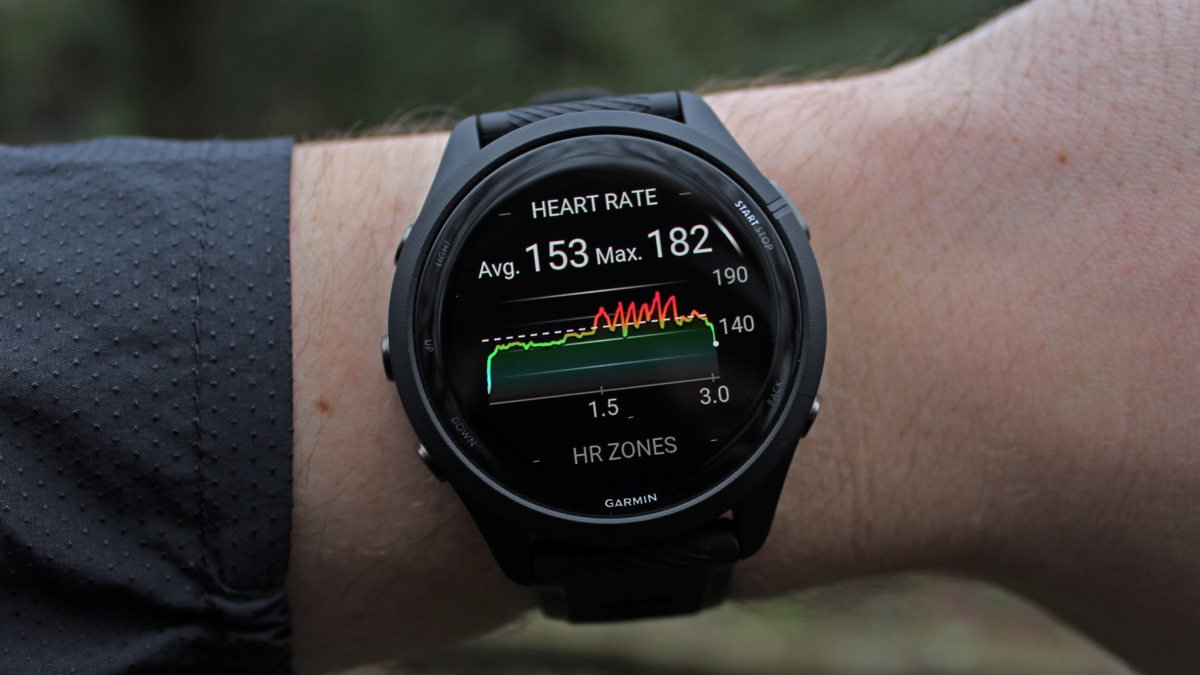
squirrel_12887371
Key considerations
- Body position: Wrist
- Sensors: Optical heart rate monitor
- External HR monitor pairing: Yes
- Heart monitoring features: Heart rate zones, resting heart rate, heart rate variability, stress tracking, respiration insights, sleep data, VO2 Max
Best sports watch for heart monitoring
All of Garmin's running watches offer broadly the same heart rate monitoring accuracy, but the Forerunner 265, we think, offers the best blend of features, affordability, and design for most people.
It comes in two size options (46mm and 41mm), and, while the heart rate accuracy isn't perfect, it does compare very well to a chest strap during interval training. You also have the option to pair up an external HR sensor, as well, if you're not satisfied with the level of accuracy on offer.
That optical HR accuracy is crucial with Garmin devices, as it powers a lot of useful insights outside of basic BPM tracking. If you're a runner, cyclist, swimmer, or any kind of athlete, Garmin's metrics are both in-depth and intuitive.
HRV Status is one of the latest, giving you an insight into your heart rate variability trends with plenty of contexts, but this just scratches the surface of how heart rate data feeds into Garmin Connect.
Also present are the likes of resting heart rate, Body Battery, VO2 Max, Training Status, stress tracking, calorie burn, respiration tracking, sleep monitoring, and more.
It's comprehensive stuff, making the 265 a great pick for those who want the top training-focused heart rate monitoring experience.
We'd also recommend the Coros Pace 2 or Polar Pace Pro if you're not into Garmin devices, or the Garmin Forerunner 965 if you want something a bit more premium.
- Read our full Garmin Forerunner 265 review
Fitbit Charge 5
Wareable
squirrel_12862605
Key considerations
- Body position: Wrist
- Sensors: Optical and ECG
- External HR monitor pairing: No
- Heart monitoring features: Resting heart rate, heart rate variability, breathing rate, heart rate zones, cycle tracking, VO2 Max, ECG measurements, Daily Readiness, sleep tracking
Best fitness tracker for heart monitoring
When it comes to heart rate tracking, Fitbit has been pushing things forward. We've picked out the Charge 5 here because it's the company's most advanced fitness tracker, but there's a lot to like no matter what Fitbit you choose.
As a heart rate monitor, it's multifaceted. Fitbit has lurched towards wellness in recent years, so the heart rate monitor populates the new Health Metrics dashboard and keeps tabs on key metrics like resting heart rate, heart rate variability, and breathing rate. All of these can be signs of illness if there are spikes and dips – and the data is well-presented.
But workouts are also tracked, and Fitbit has plenty of profiles to choose from.
Heart rate tracking performed well in our review – unless you start testing the sensor with rapid HIIT and lots of arm bending and motion. It's not chest strap accurate, and, unfortunately, there's no provision for pairing one if you need an accuracy boost. However, there are some metrics for people that work out using simple BPM readings.
The new Daily Readiness Score (for Premium subscribers) is a Whoop-esque assessment of how rested and recovered you are from workouts, using heart rate variability and sleep data. There's also the Cardio Fitness score, which is a rebadged VO2 Max measurement.
This is also the cheapest Fitbit where you'll find an ECG sensor, allowing wearers to take regulatory-approved heart rate measurements that could help detect serious heart health issues.
Elsewhere, Fitbit has put a refreshed focus on stress management detection - again leveraging the heart rate sensor.
While the Fitbit Charge 5 isn't a bulletproof heart rate monitor for athletes, it's also no slouch – and offers more insights than a simple chest strap. If your interest in heart rate goes beyond what happens in your gym session, it's a savvy purchase.
- Read our full Fitbit Charge 5 review
Whoop Strap 4.0
Wareable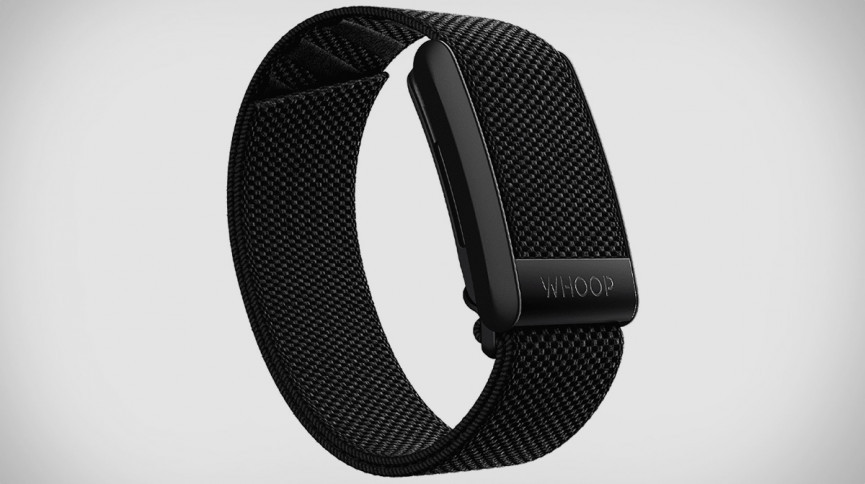
$24 / £27 a month subscription | Whoop
Key considerations
- Body position: Wrist/forearm/bicep/compatible bra/boxer shorts
- Sensors: Optical
- External HR monitor pairing: No
- Heart monitoring features: Heart rate variability, respiration insights, sleep data, BPM tracking
Most versatile heart monitor
In terms of body placement, the Whoop Strap 4.0 is by far the most versatile heart rate monitor on the market.
Designed primarily to work on your wrist, accessories also allow it to work on your forearm, bicep, or with Whoop's line of clothing.
It's muted and unobtrusive, meaning you can wear a watch (or smartwatch) on the other wrist without looking like a dork. It surprisingly only offers five days of battery life, but, despite this shortcoming, you'll get a very rounded view of your training readiness because of the very solid heart rate monitor at its core.
Whoop doesn't care about tracking steps, though. It's not even that good at tracking workouts themselves, and, while sessions can be autodetected or manually entered the feedback is limited to a basic graph, max HR, average HR, and calorie burn.
However, it’s laser-focused on the effects of workouts on your body, how much you recover, and the quality of your rest – and how ready you are to do it all over again tomorrow.
Whoop 4.0 assesses your sleep quality, and the strain of your workouts and day-to-day life. It then measures your heart rate variability, and other key wellness factors, to tell you how recovered you are. It will also factor in data on sleep conditions, such as whether you had any caffeinated or alcoholic drinks, worked on a screened device, or shared your bed.
The tracker also adds weekly and monthly reports on your fitness, recovery, sleep, and health – and there’s an excellent Health Monitor, which uses a traffic light system to keep tabs on your breathing rate, resting heart rate, and body temperature, to alert you when something is out of whack. We used it through a bout of covid, and it’s certainly on point.
The only other downside is that it costs a lot - even if Whoop has lowered its prices in 2023.
The Whoop Strap 4.0 is free, but you'll have to choose to pay either a monthly subscription (for a minimum of 12 months) or shell out upfront for a 12-month or 24-month term.
The best value option is the 24-month term, which sees you pay $399 / £384. Signing up for a 12-month will cost $239 / £229 upfront, meanwhile. Or, you can choose to pay $30 / £27 per month each month.
All this for a wearable with no screen – essentially a heart rate monitor in a case. Remember, as well, it's also one that has no resale value.
- Read our full Whoop Strap 4.0 review
Polar H10
Wareable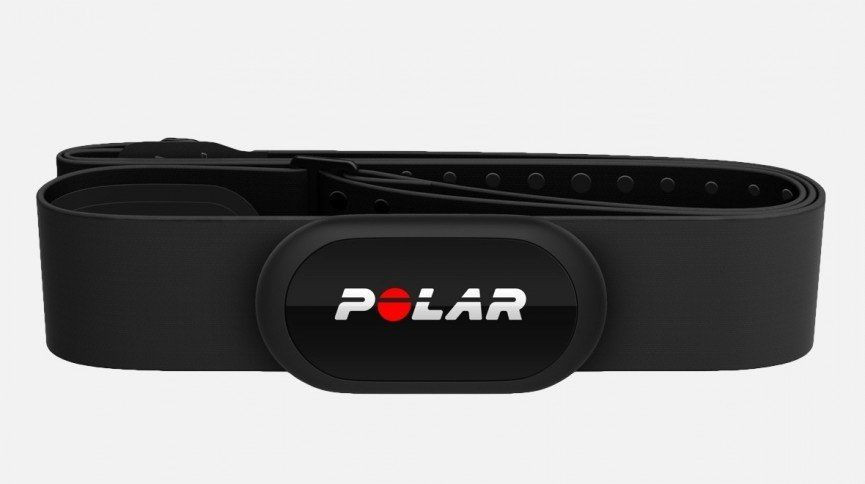
squirrel_12862660
Key considerations
- Body position: Chest
- Sensor tech: ECG
- Connectivity: Dual-band ANT+ / Bluetooth
- Heart monitoring features: Heart rate zones, BPM tracking, calorie burn
Best Polar heart monitor chest strap
If you're an exerciser that cares about accuracy, the Polar H10 chest strap is the one we've found to be one of the most reliable during testing.
The iOS and Android-friendly strap boasts Bluetooth and ANT+, so you can pair it to a whole host of devices and third-party apps - including even Garmin sports watches if you like.
It also introduces a modified design (and a loftier price) over its predecessor, the Polar H9, adding silicon friction dots to help keep the strap in place. Plus, we've found it's a bit more comfortable to wear.
It still uses an ECG-style sensor that detects the electrical activity of the heart to deliver your BPM readings, but a new measuring algorithm and extra interference-preventing electrodes help improve accuracy.
It's waterproof, so you can go swimming with it, too, although it won't track heart rate intervals in the water. There's onboard memory to store a training session, though, just in case your phone or wearable dies on you.
We've been using it to test against a lot of the latest fitness trackers and smartwatches that have landed at Wareable HQ recently, mainly throwing data into Strava and the Polar Beat app, which is built for heart rate-based training.
It's still a chest strap we go back to and can comprehensively say it still delivers the goods.
Wahoo Tickr X
Wareable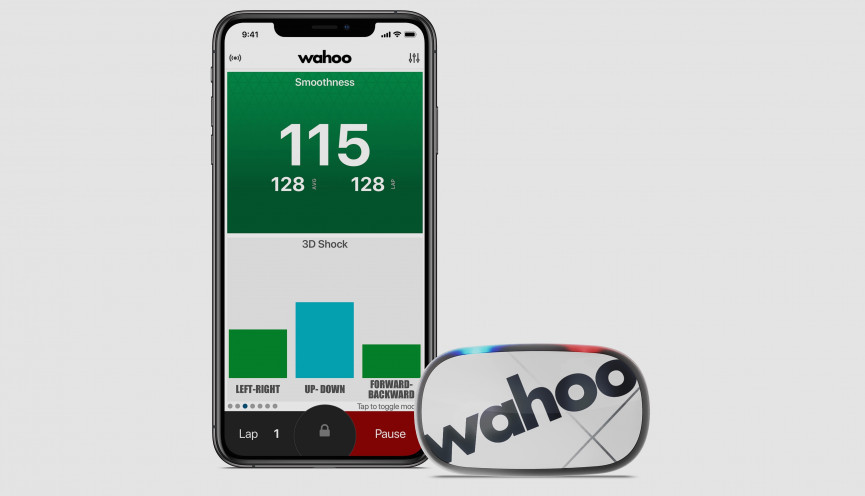
squirrel_12863285
Key considerations
- Body position: Chest
- Sensor tech: ECG
- Connectivity: Dual-band ANT+ / Bluetooth
- Heart monitoring features: Heart rate zones, BPM tracking, calorie burn
Best Wahoo heart monitor chest strap
Wahoo's top-end heart rate monitor is our favorite from the company's line of options, providing accurate readings in a small and light chest strap.
The Tickr X weighs just 48g (including the strap) and offers ANT+ and Bluetooth connectivity, allowing you to broadcast bpm data to three different devices simultaneously.
Runners, particularly, will love the extra data the latest Tickr X provides.
It can track cadence, vertical oscillation, and ground contact time in running activities, and the new Running Smoothness score pulls these metrics together to offer a singular assessment of your running style.
It's much the same data as you'll get on Garmin devices with the Running Dynamics pod, and we love the focus on form and technique.
The TickrX can store 50 hours of workouts on board the sensor itself, so you don’t need to take your phone out with you to get the data – and it will appear in the Wahoo app. And it will track 500 hours before you need to change the battery.
It looks the part, will give you an accurate hit of data, and is available at a good price, too.
Garmin HRM-Pro+
Wareable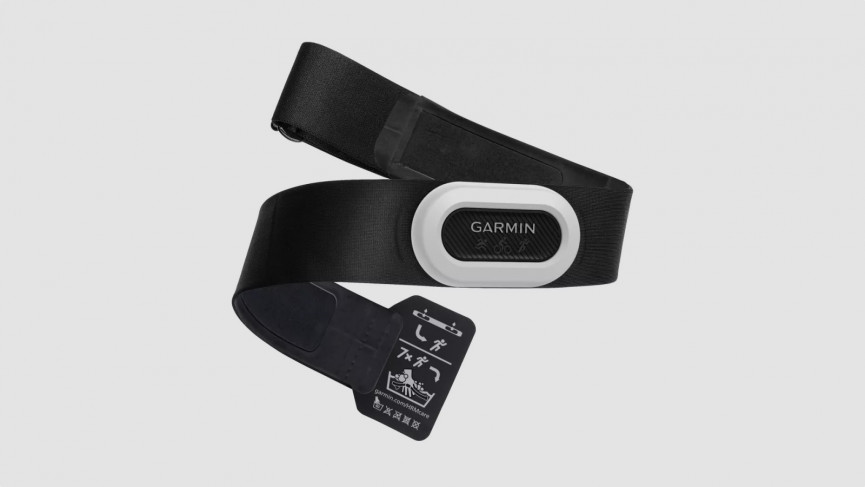
squirrel_12862659
Key considerations
- Body position: Chest
- Sensor tech: ECG
- Connectivity: Dual-band ANT+ / Bluetooth
- Heart monitoring features: Heart rate zones, BPM tracking, calorie burn
Best Garmin heart monitor chest strap
The HRM-Pro + is essentially the same as HRM Pro, but there's one big design difference that makes it the top Garmin chest strap to own right now.
Like the Pro, it's using an ECG-style sensor and offers a same-style strap, but Garmin has changed the battery compartment setup so you no longer need to get a screwdriver out to change the coin cell battery. That coin cell battery should get you a year before it needs to be popped out and replaced, too.
Outside of that welcome change, it will serve up a raft of additional metrics to delve into post-run, such as cadence, vertical oscillation, ground contact time, ground contact time balance, stride length, and vertical ratio. These metrics can help you to better understand the running technique and form to help pinpoint areas to improve to get you running better and quicker.
For indoor runners, it'll track pace and distance, as well. If you participate in team sports, it can also now track additional metrics like steps, intensity minutes, and all-day heart rate data.
It connects to devices using ANT+ - and has a 5ATM waterproof rating that makes it safe for pool and open water swimming.
We've spent plenty of testing time with the HRM-Pro+, and, if you've got an ANT+friendly watch or device, it's a solid performer for a range of activities - even when you up that intensity.
Polar Verity Sense
Wareable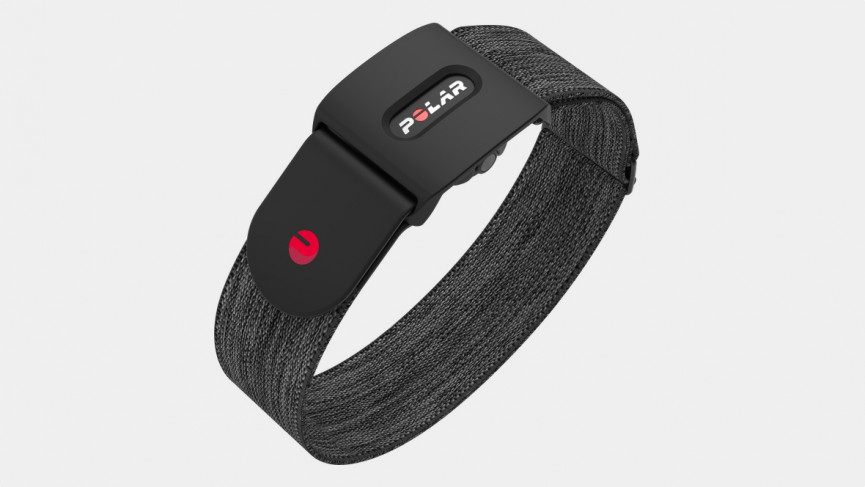
squirrel_12863282
Key considerations
- Body position: Upper arm
- Sensor tech: ECG
- Connectivity: Dual-band ANT+ / Bluetooth
- Heart monitoring features: Heart rate zones, BPM tracking, calorie burn
Best armband heart monitor
The Verity Sense is a distillation of the OH1 and OH1+ Polar armbands that came before it and is comfortably the top choice for those who don't want a wrist- or chest-based monitor.
It uses the same optical sensor technology used in Polar's older devices and offers many of the same features. That strap is machine washable, too, while the cradle that holds it in place solves one issue with the OH1 by preventing it from flipping over.
That cradle also doubles as a Bluetooth antenna to increase the connectivity range to 150 meters, and this, combined with ANT+ connectivity, lets you pair it up to a range of apps and other connected equipment.
Battery life has been boosted to 20 hours, as well, and now has internal memory for 600 hours worth of workouts. Those workouts can now be synced over to Polar Flow, which was previously unsupported.
While the sensor technology remains the same, it's now easier to choose between transmitting data to another device, recording a workout on the device, or taking it into swim-tracking mode. You're also getting a new swim adaptor to make sure it stays securely in place when you're in the water.
Accuracy against a chest strap monitor was very solid in our testing. For runs, indoor rowing sessions, and home workouts, it rarely threw out any wild data at us. We'd still opt for a chest strap for supreme accuracy, but the Verity Sense gets very close and should be good enough for most.
How to choose a heart rate monitor
Wareable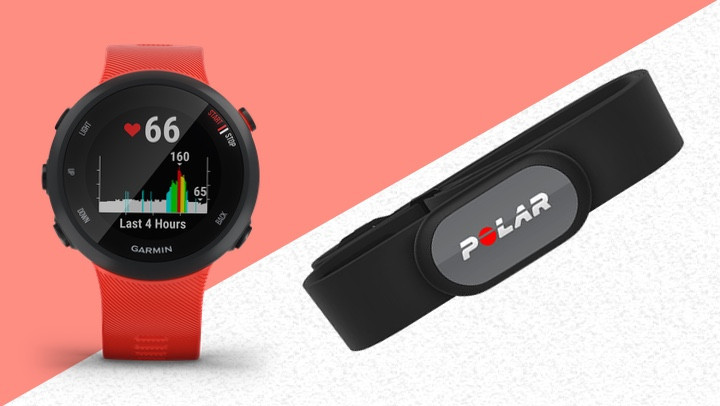
Chest strap vs. heart rate monitor watch
Whether you choose a chest strap or a watch to measure your heart rate depends on your needs.
Chest straps are chiefly designed to aid exercisers who want the most accurate readings. As we explain a bit further below, this type of heart rate monitor can withstand fluctuations in beats-per-minute, when compared to optical sensors found in watch and fitness tracker monitors.
What you pay for in accuracy, though, is made up for in comfort, convenience, and features with a smartwatch. These are devices designed to monitor you all day and often come with more features than just simple BPM monitoring.
Heart rate watch accuracy explained
When you start ramping up the intensity, doing functional fitness, or HIIT workouts, optical sensors in fitness trackers or watches will often struggle to cope with the rapid rises and falls in heart rate.
They can also be flummoxed by the movement of the wrist during exercises - ones such as press-ups, burpees, or Olympic lifting, as the skin contracts and tightens, making it harder for the sensor to do its job.
Dark skin and tattoos can also affect accuracy, as skin tone can affect the light reflection. Sadly, not enough work has been done across the board to overcome accuracy issues because of ethnicity, so, if you have dark skin and want the very best data from your workouts, think about a chest strap.
Chest straps, on the other hand, use electrocardiogram (EKG) sensors that are more accurate and more responsive to rises and falls in heart rate, and the relatively steady position on your chest makes the data less noisy.
Where can heart rate monitors be worn?
Heart rate monitors are found on pretty much every smartwatch, fitness tracker and sports watch these days. However, there are a few things to be aware of.
As we've said, optical heart rate sensors found on most wearables are less accurate than EKG chest straps and should be chosen by those that favor comfort and convenience over accuracy.
The accuracy of the devices listed below is good for steady runs, cycles, and workouts - but accuracy can dip during HIIT and workouts that flex the wrist.
That’s why many athletes still favor chest straps over a wrist heart rate monitor. However, that’s undeniably less comfortable – especially for women.
But there’s another option: some can be worn on the upper forearm.
Types of data heart rate trackers can capture
A heart rate monitor will track your bpm during workouts, and that data needs to be accurate if you’re using it to train within zones. A small discrepancy could have you training in the wrong zone, which will negatively affect your training.
However, the quality of analysis of that data after your workout (such as VO2 Max estimates) is down to the platform you’re using to track your workout.
But heart rate monitors can be useful outside of the gym. They will track your bpm 24/7, and analyze resting heart rate, readiness, sleep, and even stress. So, choosing a more generic device that can offer a more rounded look at your health can also be appealing.
How we test
